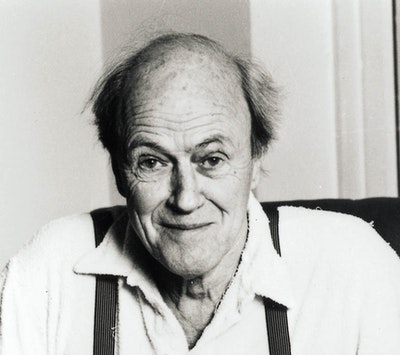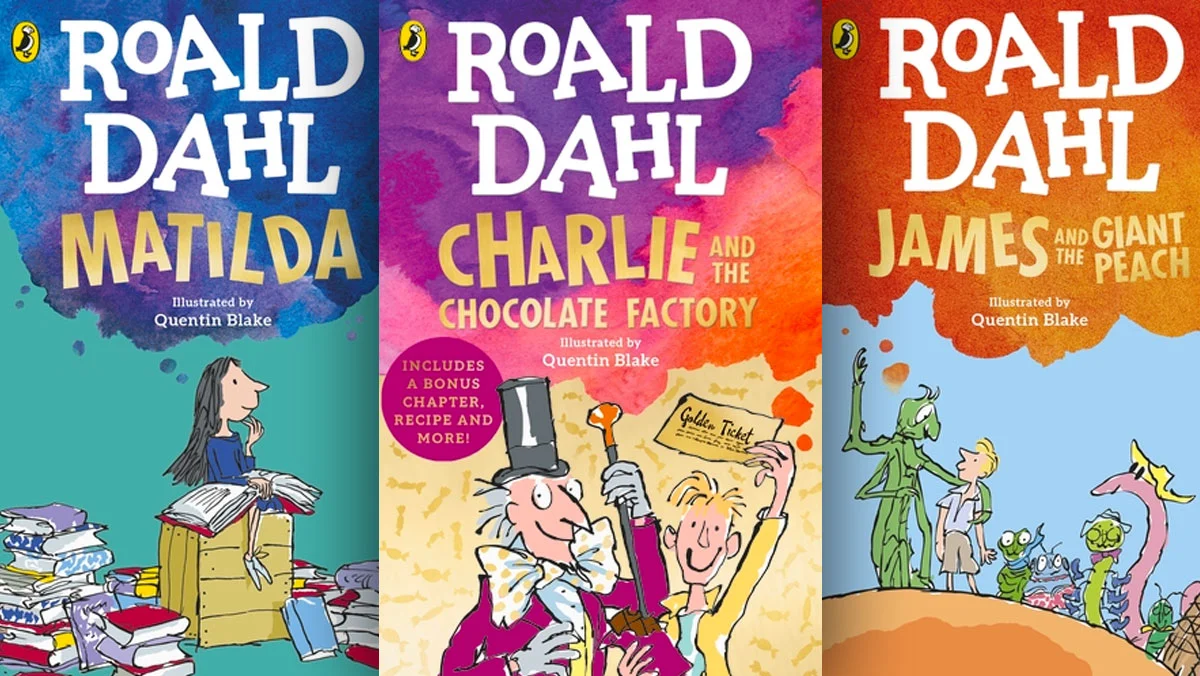
Roald Dahl’s deviance, grey moral convictions must not be whitewashed

In a story read by high-school students in India for their board examinations, a heavily pregnant child-bride smashes a frozen leg of lamb on her husband’s head. He drops like a slaughtered ox. Then she goes out to buy cheesecake. And potatoes. Her husband was a policeman — his friends are shattered. They don’t cry.
They pat her shoulders, squeeze her hand. All said and done, they drink to their departed friend’s life, and eat some meat. The very club of lamb that pulverized a hardened skull — and some more. The woman grins, maybe slurps. The evidence is devoured amidst gassy chortles and sighs.
A taste of the truly bizarre
For all intents and purposes, Roald Dahl meant this story to be read by adults. This is not to say his children’s stories are sparing in terms of violence. Abandoning the visceral for the absurd, his beloved tales for middle-school students feature kids being elongated, shrunk in size, zapped across dimensions, and possibly devoured by crazy squirrels.
This sort of deviance characterizes his work much more frontally than the subdued tones of racism and antisemitism that have come to dominate the narrative around his work.
Even so, kids and their parents still swear by his stories; Netflix, which acquired his estate recently, has registered record profits from the sale of Dahl’s work and adaptations. His is the kind of horror which Stephen Fry would describe as “mumps of the literary variety”, giving the little ones a taste of the truly bizarre before they climb out of their cocoons and fight, well, the truly bizarre. Dahl is the thinker the world didn’t know it needed. Thirty-two years after his death, we ask: did we, really?
Political correctness gone mad
The most recent controversy concerns what is called bowdlerization — the cleansing of prose to eliminate what might be called hateful, insensitive, or plain inflammatory — of his stories. Puffin, the children’s imprint of Penguin Random House, has brought a new edition of Dahl’s works. Sample this: in The Witches, the description of women as cashiers and letter-writers changes, in this new edition, to scientists and business owners. Behind this revision is the astute, and what many may consider revolutionary,
Also read: Talat Mahmood: Trailblazer with a velvet voice, a gentle mould-breaker
Consider the obvious association of being fat with being evil, of being dark-skinned to being from a particular walk of life, and other 20th-century meanness.

When the newest bunch of bright-eyed younglings pull a spindly Dahl out of the kids’ section of their (parents’) Amazon accounts, they will read a sanitized version of text which rearranges Dahl, the writer — and to the untrained child, the person — in a glowing light, and not the insidious grey of his other moral convictions. It will be an erasure of not evil, but of the thought that evil can coexist with fabulous storytelling talent. The death of nuance is inevitable in what has been alleged to be the latest instance of political correctness gone mad. The club of lamb, so to speak, has been devoured amidst irresponsible cultural hysteria.
Artificial veneer of real-world diversity
Dahl is predictably not the first author to be targeted by this variant of literary activism. In fact, the list covers William Shakespeare, Mark Twain, and, ironically, Ray Bradbury’s Fahrenheit 451. As the headwinds of a time take on different directions, several cankers rear their heads on the cultural scene’s sore back.
While this conversation is about exorcising prose of baldfaced literary cruelty, some authors have gone ahead and begun overcompensating for what they perceive was a shortcoming on their own part. JK Rowling, beloved holder of eye-wateringly
Also read: 75 years after Gandhiji’s killing, what his biographies reveal about his political, spiritual life
Revealing some characters to be gay, or Black, to inject diversity in the Harry Potter universe is an act of rewriting existing literature in response to, or anticipation of, alarmism and accusations of underrepresentation of marginalized communities. What Rowling may have forgotten is that the Potter books talk about such communities — in an obviously allegorical tenor — very, very explicitly, when she talks about tortured house-elves, outcast centaurs, and wronged goblins. This should have been enough. Her adoption of this new-fangled, artificial veneer of real-world diversity — of colour, sex, and gender — robs the readers of their own interpretations of these characters.
Roald Dahl vs JK Rowling
Both Rowling and Dahl are primarily children’s authors. Rowling’s work, released at the turn of the century, manages to avoid explicitly inappropriate depictions. And she’s a product of her time. In a delightful BBC promotional from the early noughties, she sits in an overly lit room and talks fondly of children and their innate maturity, of their knack for grasping the fantastical from the real. Dahl was born into a world of soot, of more dire times, walking by buildings built on the back of slavery, reading about governments built on the foundation of hate, and feeling the heat of a flaming bus during the race riots from across the Atlantic. His books are littered with details that subliminally give away his ingrained sense of prejudice and hate.
What distinguishes Rowling from Dahl, among other things, is that Dahl is no longer in control of what is said and written about his work. As such, to take on the task of selectively editing his work strikes one as a desperate act of capitalizing on both Dahl’s inarguable, total command of his craft, and an activism that has famously begun pointing out and criticizing the awkward and hateful. Yet, this act does a disservice to both these motivations.
Removing entire sentences from his work renders each of his books a pastiche of its past self, almost akin to removing a fistful of gears from the insides of the great clock that makes his stories sing. It further makes a mockery of the brand of activism spearheaded by cultural critics, as the focus of this sort of editing is not on making amends, but making cosmetic concessions to accusations. It may appear that the people behind these editions find this criticism to be superficial, so insubstantial as to be able to be done away by a mere re-editing of a problematic author’s work. A more staunch adherence to such values would have been to not publish any more of Dahl at all. That would be a bad call, and certainly not anyone’s takeaway from a Publishing 101 class.
Entities in their own right
My first introduction to Roland Barthes, the French literary theorist, was in a scene from 2014’s Best Picture winner, Birdman, where Barthes is evoked to equate superhero characters to gods. To Barthes we shall return. In his seminal 1967 essay, Death of the Author (on translation), he argues for a cleavage of the author of a work from the work.
Also read: ‘Age of Vice’ review: A compulsive thriller spun around chasms of class
This means that once the author has birthed the book, the umbilical cord tying every reading of the work to the author is neatly sliced, and the incision is daubed clean. The work now is an entity in its own right, travelling from a box to a bookshelf to someone’s rumpled bed-sheets like a marauder, being read by different sets of eyes, traced by different sets of fingers. The book shall be interpreted by each reader in his own time, on his own terms, and there are to be as many interpretations of the book as there are readers.
Barthes’ literary surgery helps us make sense of our present literary dilemma. In the case of Dahl, it helps to separate his admittedly antisemitic self from his works’ concealed bigotry. It preserves the reality of his rottenness (his first wife, whom he is known to have tortured, called him “Roald the Rotten”), and also preserves its evidence in sheafs of his work, open to any discerning reader to form their own judgment of the same.
This trick, so to speak, sidesteps a crazed fact-finding expedition through his work, incensed by his personality, but doesn’t lull us into the safe confidence of believing we’re reading unblemished work, an unethical illusion being currently attempted by fans of bowdlerization. Such editing does nothing to address our contemporary realities and the evil that currently weaves through masses, stress-free. Let sleeping dogs lie, yes. Pray for them. Struggle, as it goes, for those awake.


